Figures
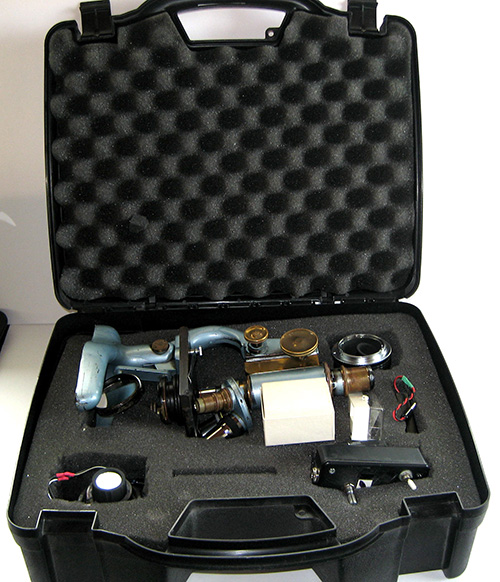
Travel case.
|
My 92 Year Old Travel Microscope by Howard Lazerson, USA |
About 40 years ago I became interested in plankton after watching a TV nature show on the subject. I purchased a book titled "The Open Sea. Part 1: The World of Plankton" by Alister Hardy. This book fascinated me with the incredible variety of micro life that was present in the sea. The book contained numerous drawings of plankton plus flash photos and watercolor paintings by the author of live net tows. Not only was he a lucid writer but an accomplished artist as well. He pointed out that anyone interested could get a plankton net and collect and view the catch themselves, followed by instructions on preserving them in a live state until they could be examined.
Well, I was hooked, I had a microscope from my medical school days plus a SLR camera so I ordered a tow net, a microscope camera adaptor and a box of blank slides and coverslips. The microscope, a Bausch & Lomb monocular was old when I used it in the “60’s” and 12 years later it looked like an antique but it was what I had so I set about improving it. This mainly consisted of lubricating the optical tube focus mechanism plus the condenser swing out gear with Vaseline. The objectives [6X-10X-43X] looked clean with no scratches.
Despite its age, the scope had several features that made it particularly suitable for photography of live plankton as a travel scope.
A] a swing-out mirror which made it easier to use daylight as a light source [remember these were film years] or parked in a vertical position off to the side to allow use of a substage illuminator.
B] a quadruple nosepiece.
C] a swing-out condenser making it easier to add a stop for darkfield and/or unscrew the top element for low power illumination.
D] lighter weight and smaller over all size for travel compared to other monocular scopes.
E] a drawtube, for coverslip thickness variation
D] optical tube easily racked out for ease in packing.
It also had a few minuses;
A] stage micrometer worn gear contacts—I removed it since I found it easier to move slides manually on the X-Y axes.
B] difficult to rotate slide in order to line up long subjects in camera FOV. I added a crude but effective rotating stage top by drilling 2 holes to accept 2 small pins in rear of stage after centering a CD disc and marking its outline—now since 3 points determine a plane, finger pressure on the disc [ 3rd point ] at the front of the stage allows me to rotate the disc with the slide easily. This also would work for polarization study.
C] the 6X objective was too much magnification for some of the larger critters so I added a 4X.
D] no illumination system. I had a simple ac powered bulb in box substage illuminator without a brightness control which was not ideal but worked for B&W film. For color slides the mirror was used but the need for ac on a travel scope was a problem. I first scavenged powerful flashlight heads to build rheostat controlled DC illuminators, and later switched to LED when these became available.
This is the basic travel system I have used for the past forty years—throw in a log book, a box of coverslips and slides, color pencils, a digital point and shoot as a backup camera all packed in a foam lined case which fits under an airline seat. My main camera and plankton net travel in a backpack along with a selection of clothes for overhead stowing.
I recently checked my log books and came up with a total of 137,000 air miles plus an additional 9,000 by car and boat. Locations include the Hawaiian islands, Pacific coastal waters of California, British Columbia and Alaska including the inside passage and a multitude of lakes and rivers in Canada and the USA.
Not a bad 2nd life for a microscope born in 1925! I thought the date of manufacture was 1935 but recently found the number code on the scope drawtube and was able to locate the B&L date codes on the Internet.
Howard Lazerson, Los Angeles, California
All comments to the author are welcomed. Email: hlazerson AT gmail DOT com
Figures

Travel case.
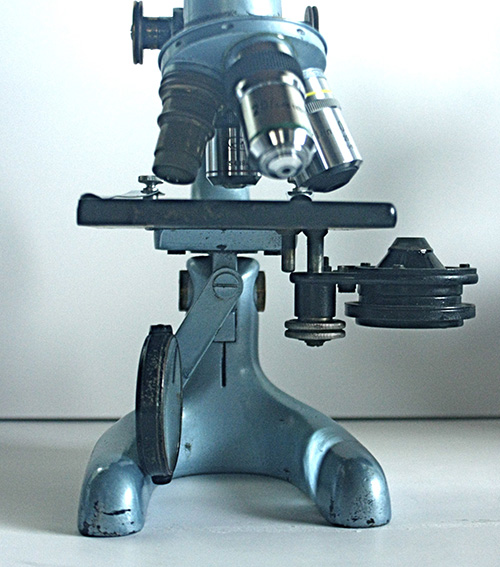
Swing mirror in side "parked" position and condenser in swing out position
making it easy to add filters or stops or remove top element.
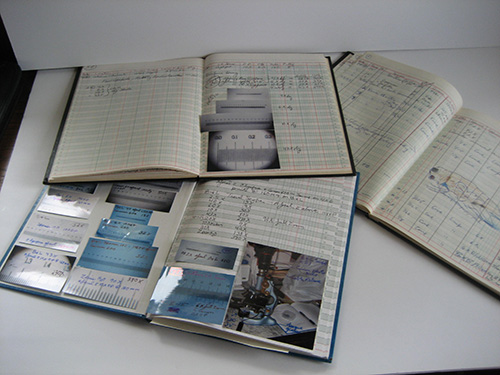
Accounting books used as photo logs, each book has numbered lines and pages and I drew up columns for
date, location, exposure, camera, objective, moon phase, eyepiece if used. Also added pics
of stage micrometer to calculate image size of 4X6 print with various objectives.
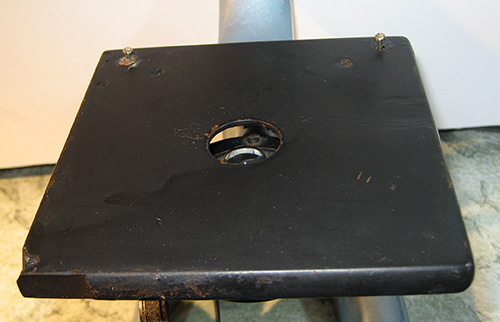
Pins in stage for CD.
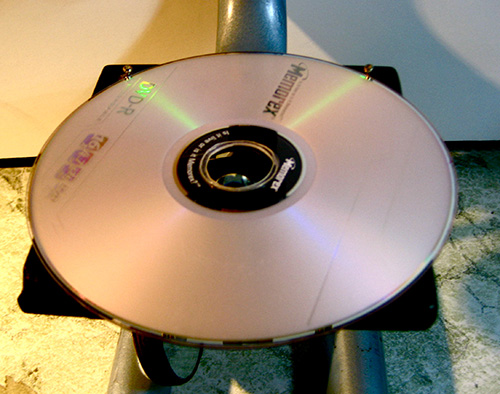
CD in place [unpainted photo] painted black in use. [ Crude but works ! ]
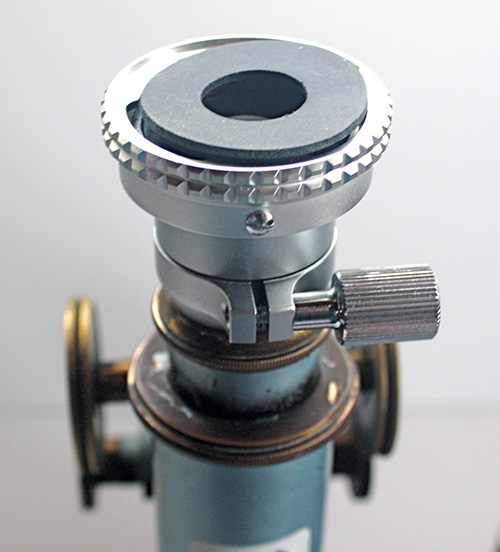
Bottom 1/2 of DSLR camera adaptor in place holding 10X eyepiece which is covered by 3 black O-rings ....
these prevent afocal backup camera lens from touching eyepiece and can be lifted off for visual use.
Microscopy UK Front
Page
Micscape
Magazine
Article
Library
Published in the January 2018 edition of Micscape Magazine.
Please report any Web problems or offer general comments to the Micscape Editor .
Micscape is the on-line monthly magazine of the Microscopy UK website at Microscopy-UK .
©
Onview.net Ltd, Microscopy-UK, and all contributors 1995
onwards. All rights reserved.
Main site is at
www.microscopy-uk.org.uk .